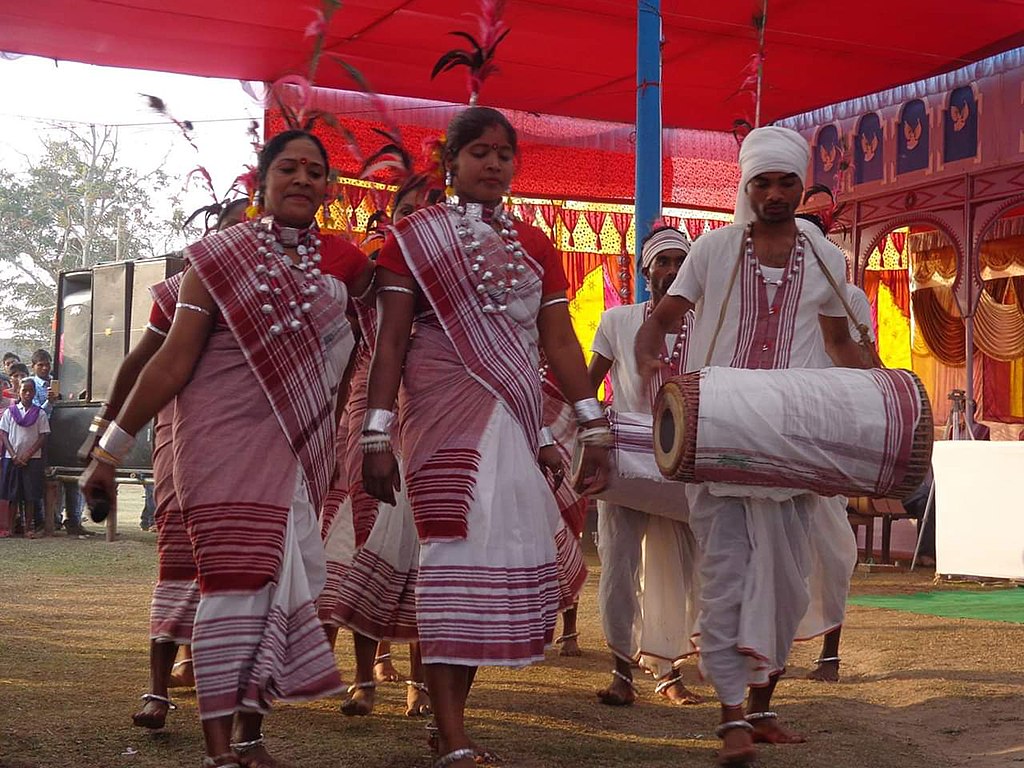The Barao folk dance is a celebration of the Oraon community thriving in the state of Jharkhand. This community has rich cultural traditions. It is one of the largest groups dwelling in the hilly region of Hazaribagh Goomla. They have Dravidian origins. Oraon community is are also known as Kurukh. They are also spotted in the neighbouring states of Assam and West Bengal.

Purpose of the Barao dance
The Barao dance is part of the dance festival that is organized by the Oraon tribe in May. The festival is celebrated just before the onset of monsoons. Through the Barao dance, the tribe offers their prayers to Mother Nature for a good monsoon season. The main occupation of the people of this community is agriculture, which means a good monsoon season is a need for having a healthy harvest later in the year.
Barao Dance Performance
Tha Barao dance is performed in a specific area called the Akhada. Every village has its Akhada where the dance festival is organised every year in the Baisakh season. The dance is open to all men and women of the tribe. The female dancers are positioned in the outer circle while the men perform in the centre.
The men also play musical instruments, and the women sing throughout the dance. Small groups of five or six female members go around the stage matching steps with the beats of the drum. In one move the women take two steps towards the men in the inner circle. Next, they face outwards and move ahead in the circle. This is done in repetition. The men also perform similar steps in the inner circle. The women also hold each other from the waist with one hand and hold a tuft of long leaves on the other. This tuft is swayed in sync with their footsteps.
Traditional Attire of Barao Dance
The tribal women wear a saree draped simply without any pleats. The sarees are white with broad red borders. Matching red full-sleeved blouses are paired with the sarees. The saree ends slightly below the knees showing the ankles adorned with metal jewellery. The women tie their hair into a neat bun and put a headband around the head with long peacock feathers in it. The hands and ears of these women are ornamented with gold or silver jewellery.
The men wear a white shirt matched with a white cloth draped like a dhoti. White cloth with red borders is tied around the waist. Jewellery includes a golden coloured armband. A white cloth is wrapped on the head in the form of a turban. They wear a band around their chest which is fitted with peacock feathers on the back.
Instruments Used
The men carry drums of various forms, which are decorated with a thick bundle of feathers on the rear ends. Other than the drums there is the jingling music of the anklets worn by the female dancers. Additional music is also played.

Pingback: All Folk Dances of India - Auchitya